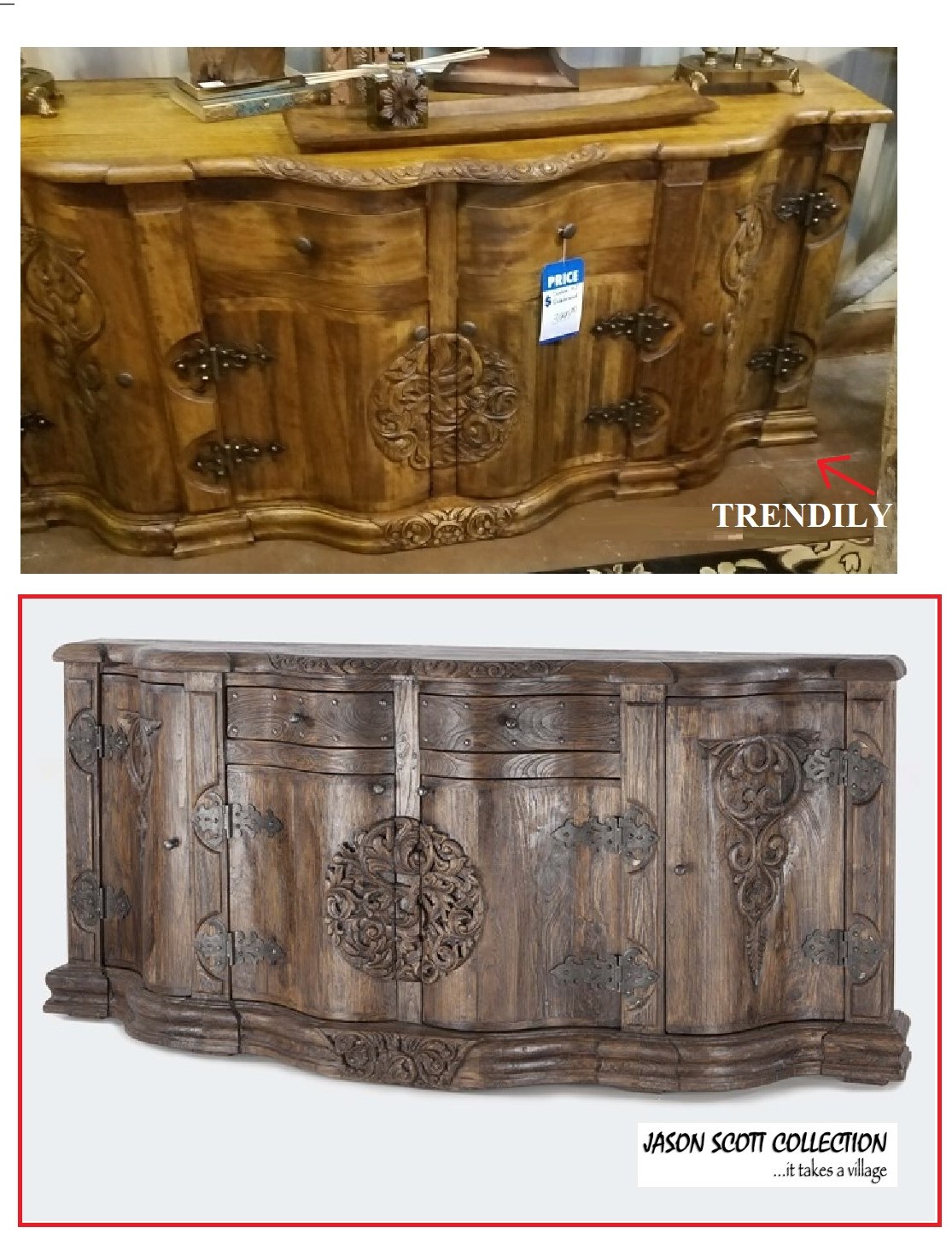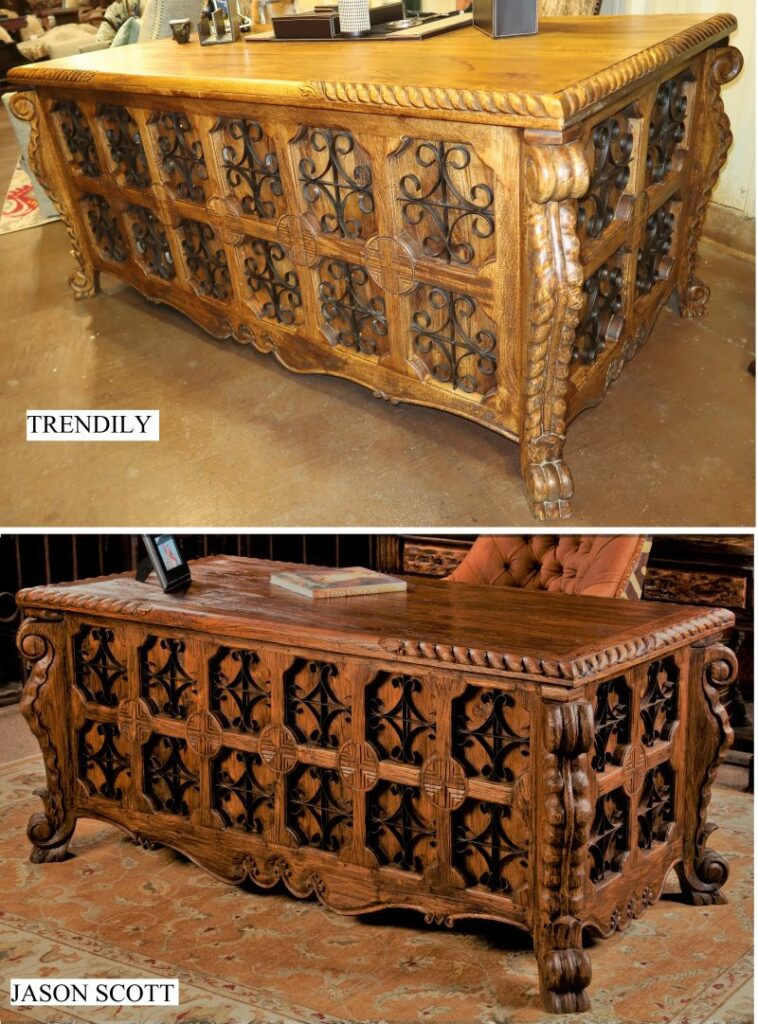Court rules that importer Trendily Home Collection copied his designs and sold them to retailers
PHOENIX — When a retailer in Fort Worth, Texas, showed Jason Scott images of his furniture on the website of one of that store’s area competitors in late 2016, it began a seven-year legal fight not only to protect his designs, but also the business he created in 1995.
That battle ended earlier this year when the U.S. Supreme Court declined to take up the case at the request of the defendant, Trendily Home Collection of Houston, after it had lost the latest round in the U.S. Appeals Court for the Ninth Circuit. As reported by Home News Now in early June, the Ninth Circuit upheld an earlier court decision that ruled in Jason Scott Collection’s favor, stating that the Texas-based importer had copied his designs and sold nearly identical pieces to retailers.

But Trendily took the case to the highest court in the land, illustrating a rare example of the lengths that a defendant will go to fight the allegations of a plaintiff trying to protect its designs from being knocked off. Ultimately the court’s rejection represented a long-sought victory for Jason Scott, who was awarded $307,000 in damages resulting from the case, just under half of which went toward attorney fees.
But Scott said the case — which took years of legal wrangling and investigative maneuvering and detective work including the help of his brother to find out who was knocking him off — wasn’t really just about the money. It was instead about protecting his designs and, ultimately, his business.
At first, he was advised that there wasn’t much he could do to fight someone taking and selling his designs.
“They just think it’s a bluff and they think that nothing’s going to happen to them and that the whole thing is going to go away, and that the letters from your lawyer are a fear tactic,” Scott said of knocking off and selling products the defendants had no role in creating. “I sent two cease-and-desist letters and it didn’t do a thing.”
But Scott’s legal counsel agreed he had a solid case, having seen the photos of the knockoffs compared to the original product. They sent the first cease-and-desist letter May 24, 2017, a date that’s etched in Scott’s mind, particularly given what was at stake. The fear was that Trendily would not stop at just a few pieces, but would ultimately steal the designs of the entire line, which took years to create.

“They did not stop until the lawsuit happened,” he said. “And then, even in the beginning, they thought it was just kind of a joke. But you know, I think if people are really doing this in their business platform, it’s only a matter of time before a guy like me comes along and isn’t going to stand for it.”
He noted that the smaller the business, the more challenging it can be to fight such tactics.
But Scott said he knew he had a case, given how identical the designs of the knockoffs were. And when it came down to it, he was not only protecting the business for himself, but for the 250 workers that are employed by the company’s operations in Indonesia.
“I have a look that I have to protect,” he said of the highly carved designs done in its dedicated workshops in Indonesia. “My specialty is the look that I do. So when someone comes in and knocks it off, I didn’t feel like I was just going after this guy — I felt like I was fighting to save my business.”
Scott created Jason Scott Designs in 1995, making trips to Indonesia with nothing more than a backpack and some ideas for a furniture line. He got his own inspiration from various antiques and old doorways from which he would build coffee tables, headboards and other pieces with solid reclaimed wood. It was a process of discovery and creativity that involved matching old pieces with new pieces of wood to create entirely new looks built by a dedicated team of carvers and woodworkers many of which are still part of the village in Java where his line is built today.

“You can be inspired by everything and there’s no shame in seeing something and taking from that,” he said adding, “That can be anything from the shape to the size or the way the left side is angled and the right side is straight. You can do that and make it your own” to where it doesn’t look like the original piece. “But you’re inspired by that. Just like a musician can hear a song and like the groove of it and then they can write their own song and it doesn’t sound like the other song. Inspiration is everywhere. I mean I get inspiration from floor tiles, from women’s dresses with motifs on them. It’s everywhere and in the beginning I was just like a sponge looking for inspiration with everything.”
“I was always trying to get ideas — inspiration is out there. But taking a piece of furniture and completely copying it, that is nothing to be proud of,” he added. “There’s no talent in that. It’s just ballsy is what it is.”
Efforts to reach Trendily for comment were unsuccessful.
He said smaller entities that feel like they are not protected from someone stealing their designs need look no further than copyright law which aims to protect original designs.
However documentation is required, he said, which he had to provide in order to register his designs with the U.S. Copyright Office.
“We had to register the copyrights to do this, but for someone who is reading this, know that your designs are protected,” Scott said. “But you have to prove when you started selling them so you can back date it to when you first did it.”
An attorney with expertise in intellectual property law said that there are several ways a company or designer can protect their designs ranging from copyrights and patents to trade mark and trade dress, all of which can put a proverbial fence around intellectual property. “The success they achieve in protecting themselves against knockoffs, is directly tied to the effort they take in protecting their designs,” the source noted. Thus “designs that are protectable often are successfully defended. Protectable designs will hold up in court.”
But the distance that Scott and his legal counsel went was indeed unique. For example, Scott said that his attorney noted it was very difficult to find other furniture lawsuits on copyright infringement that went as far as federal courts, much less the U.S. Supreme Court.
“He wanted to use other cases to pull from and cite, to show others had already won for this,” Scott said. “He mostly had to use tennis shoes and other strange copyright cases because there wasn’t anything that went the distance like we were doing. So much of this lawsuit was citing other previous lawsuits and it would have been easier to have furniture copyright infringement cases to cite.”
And having gone the distance, with victories in federal court and the Ninth Circuit, the “Supreme Court had a look at this case and agreed with the two lower courts,” Scott added. “It will make the road much easier for someone who is getting knocked off to win a lawsuit. They will be able to pull from my case and use what the federal judge ruled on, what the District Court of Appeals ruled on and lastly what the ultimate Supreme Court ruled on. My lawyer said this case will be used over and over in furniture copyright infringement cases for many, many years. So from this moment forward, it will be easier for the guy who designed the furniture and a lot harder for the guys doing the knockoffs when things go to court.”
He added that companies looking to protect their designs also need not worry too much about the overall legal costs, which for his company amounted to about $150,000.
“With a lawsuit, it is kind of a drag that it goes on so long, but you are not having to pay it all at one time,” he said noting that legal bills are staggered over the length of the case. “It’s something you can manage, so don’t be afraid of the big ticket, especially if you believe you’re going to win this.”
And while the effort took years and years of waiting for a successful result, he believes it was well worth it in the end.
“There was no way this guy was going to take over what we started so many years ago,” Scott said, noting that his wife is from Indonesia and his son was born in the village where the line is built. “There is a lot of me that is connected to this.”






I’m glad he sued and won!!. The bums that thought of taking a short cut to make a quick buck should have been fined a lot more. That’s why we have patents to protect us against this sort of thing.